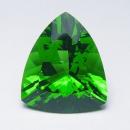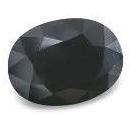|
Click on a letter above to view the list of gems. |
|
|
|
|
|
|
||||||||||
|
Tektites |
|
|
||||||||
|
|
||||||||||
Libyan Desert Glass |
|
Moldavite |
|
Tanzanian Tektite (?) |
|
Other Tektites |
||||
|
Tektites may be Meteoric Silica Glass as a result of the impact of a meteor on Earth. Tektites are usually found in association with meteor impact craters or suspected ancient craters. Their origin is not fully understood. The leading theory, the "Meteorite Impact Theory", is that when a meteorite hits the Earth, the heat and pressure of the impact are so great that it causes rock and sand to be fused into glass or Tektites. Tektites, like all natural glasses, contain gas bubbles and "swirl" like inclusions. The best known Tektites are found near the River Moldau in the Czech Republic (originally Moravia). These are known as Moldavite and are a beautiful olive green. Another interesting type of Tektite is Libyan Desert Glass. It is a beautiful straw or champagne yellow. Libyan Desert Glass is from the White Desert in Egypt (not actually Libya). Until recently, these were somewhat controversial. They were suspected to be Tektites similar to Moldavite, but were not associated with any meteor crator or impact zone. Researchers at the Center for Remote Sensing at Boston University have recently discovered a very large impact crater in Egypt 31km in diameter which seems to coincide with the formation of Libyan Desert Glass. This crater has been named the Kebira Crater. The association of Libyan Desert Glass with this newly discovered crater is tentative and further research still needs to be done. Other Tektites are found around the world and are usually named after their location of origin. One such Tektite is Indochinites which is named after the region of occurrence; the former French colonies of Indochina (Vietnam, Laos, Cambodia) plus Thailand and southern China. These Tektites are usually dark brown to black natural glass. Deep
green Silica Glass suposedly found near Mt. Kilamanjaro
in Tanzania is a mysterious and controversial material
that has been called many
names including Green Obsidian, African Moldavite, Tanzanian
Tektite,
Green Volcanic Glass and even just glass. One source
says the Tanzanian natives call it Obsidianite. It is
reported to be found in alluvial deposits and in a river
bed at the base of Mt. Kilamanjaro. Some say it is a
natural volcanic glass, some argue that it is man-made
glass, others claim it is of meteoric origin similar
to Moldavite.
Calling it "African Moldvite" is incorrect
however, since Moldavite
only comes from the Moldau River reqion of the Czech
Republic. This deep green material, if not man-made, is
most likely to be Obsidian or volcanic glass. What ever the
source of this material or however
it was formed, it is a stunning gem of the finest Tsavorite
green color. |
||||||||||



